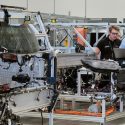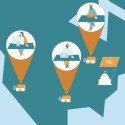Analytics Lessons From Every Level of Government
While no agency was totally ready to handle COVID-19, the ones quickest to their feet had widespread data literacy and readymade use cases.

While no agency was totally ready to handle COVID-19, the ones quickest to their feet had widespread data literacy and readymade use cases.

While with a vaccine and the right response, the pandemic itself will fade, its long-term health impacts will live with those who contracted and survived the virus. Interoperable, nuanced data will be vital to treating their conditions.

In an interview with GovLoop, an expert shared three areas agencies should focus on to adapt to an environment where employees can work with data anywhere.

As work and home lives tango during COVID-19, employees are tuning their schedules to the remote work rhythm that best suits them.

By the count of a recent GovLoop survey, public service has held up pretty well six months later considering the unscripted, tumultuous changes of COVID-19.

In this blog post, we define the terms and explain the connections of a modern software factory.

The reason DoD is able to thrive on the AI frontier, where so many agencies have barely trodden, is its central platform for data tools and services.

While local departments steward their own files, journalists and nonprofits maintain the most complete statistics on police use of force nationally.

In the federal workforce, a barrier to entry and differentiator for success is socioeconomic status – especially, for first-generation professionals.

In response to the global need to work from home, we’ve seen many government agencies put a renewed focus on equipping their workforces with modern, mission-critical technologies.